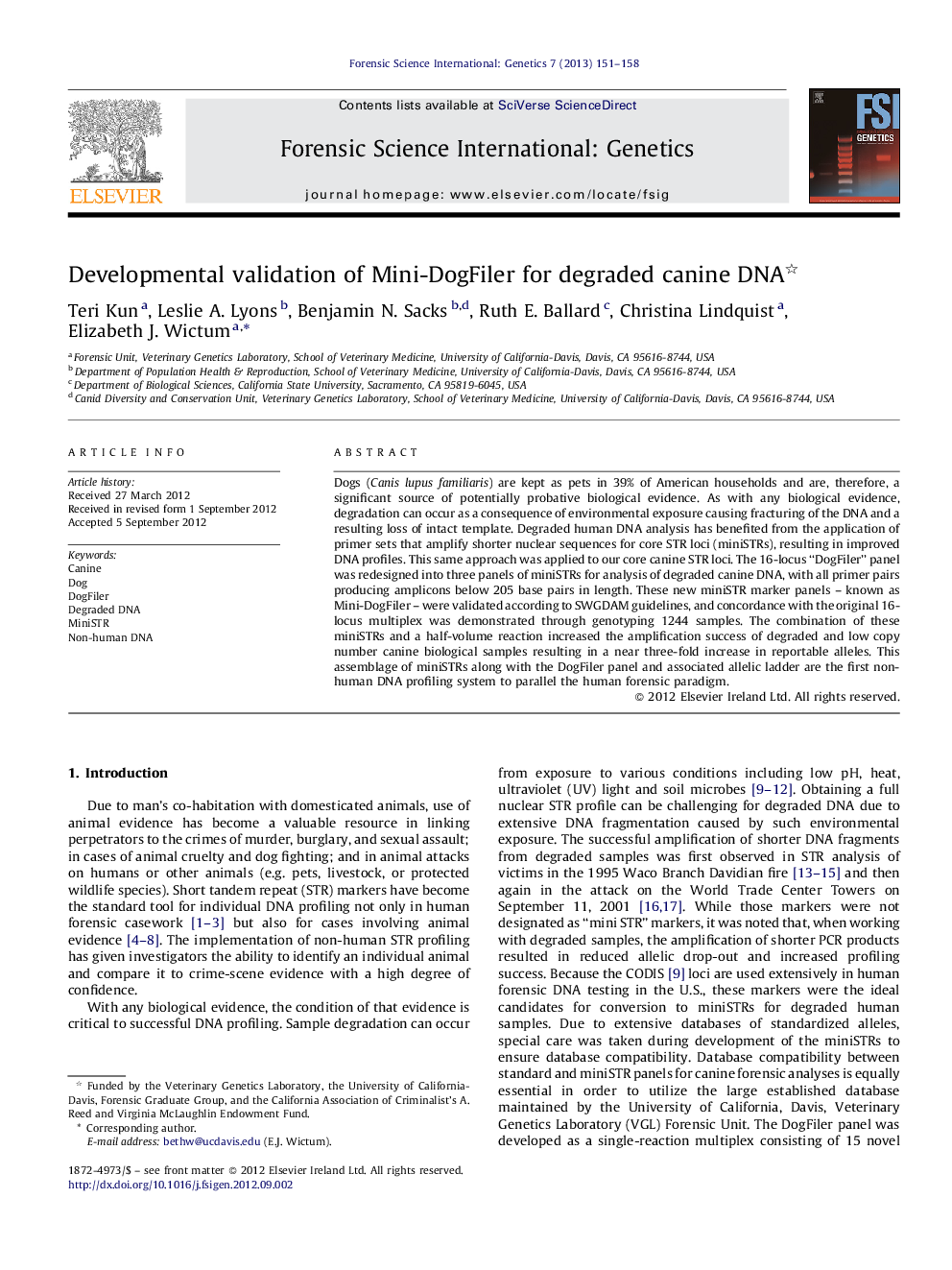| Article ID | Journal | Published Year | Pages | File Type |
|---|---|---|---|---|
| 10254025 | Forensic Science International: Genetics | 2013 | 8 Pages |
Abstract
Dogs (Canis lupus familiaris) are kept as pets in 39% of American households and are, therefore, a significant source of potentially probative biological evidence. As with any biological evidence, degradation can occur as a consequence of environmental exposure causing fracturing of the DNA and a resulting loss of intact template. Degraded human DNA analysis has benefited from the application of primer sets that amplify shorter nuclear sequences for core STR loci (miniSTRs), resulting in improved DNA profiles. This same approach was applied to our core canine STR loci. The 16-locus “DogFiler” panel was redesigned into three panels of miniSTRs for analysis of degraded canine DNA, with all primer pairs producing amplicons below 205 base pairs in length. These new miniSTR marker panels - known as Mini-DogFiler - were validated according to SWGDAM guidelines, and concordance with the original 16-locus multiplex was demonstrated through genotyping 1244 samples. The combination of these miniSTRs and a half-volume reaction increased the amplification success of degraded and low copy number canine biological samples resulting in a near three-fold increase in reportable alleles. This assemblage of miniSTRs along with the DogFiler panel and associated allelic ladder are the first non-human DNA profiling system to parallel the human forensic paradigm.
Related Topics
Life Sciences
Biochemistry, Genetics and Molecular Biology
Genetics
Authors
Teri Kun, Leslie A. Lyons, Benjamin N. Sacks, Ruth E. Ballard, Christina Lindquist, Elizabeth J. Wictum,
